Mission “Dive Mola Mola”
Codename: Dive Weird Fish
Listen up Special Agent Flipper, your mission, should you choose to accept it, is to find and photograph the elusive Mola mola. Your contact for this mission will be Siren Diving Lembongan. Establish communication with Siren Diving at the earliest opportunity by clicking on the secretly coded “Book Now” button found on their website.
Dive with what?
This mysterious creature goes by many common names – Mola mola, sunfish, moonfish and some people even refer to it as “big flappy disk fish”… mostly by me… just now… in this blog. Mola may be Latin for millstone, but in Germany the fish is referred to as Schwimmender Kopf, or “swimming head” and in Poland the samogłów, translates as “head alone”. The Chinese name of fan-che yu 翻車魚, translates to “toppled wheel fish” and the Dutch name of maanvis means Moonfish… You see, big flappy disk fish doesn’t seem so weird now does it?
What exactly is a Mola?
It’s a fish. A big, bony, lumpy, odd shaped fish.
These ecto-parasite laden individuals (the parasites live on the skin), are certainly somewhat of a tourist drawcard for scuba divers in Nusa Lembongan. The fish that is, not the parasites. Let’s take a few moments to learn a little more about them, and improve your general “pub quiz” knowledge at the same time. Besides being one of the most awkwardly shaped fish known to swim the sea, the Mola is something of a record breaker.
- It is the largest bony fish in the sea.
- Females can produce more than 300 million eggs in one go which is significantly more than any other vertebrate. By comparison a mature female Sturgeon, where caviar comes from, only lays up to 800,000 eggs in one brood… That’s still quite a lot of caviar.
- They also experience the most extreme growth spurt of any vertebrate animal; newly hatched sunfish larvae are only 2.4mm long and weigh less than a gram and by adulthood can be as long as 3.2m, as tall as 4.2m and weigh up to 2,300kg. That’s an increase of 60 million times their size from birth. That’s the same as a newborn, healthy human baby growing to the size of 6 Titanic Cruise liners!
- In Polynesia, where the fish is known as, “The King Of Mackerel”, it is considered bad luck to eat a mola in case their loss prevented other mackerel from making their way to the island.
- Most bizarrely of all, mola could be used as a tax payment to shoguns in 17th and 18th century Japan. Source : Journal of Experimental Marine Biology and Ecology
What’s in a name?
Let’s clear this up; the correct scientific name for the Mola that can be found in the waters around Nusa Lembongan and Penida, is actually Mola ramsayi. The scientific name of Mola mola really belongs to their slightly larger, more lightly coloured cousins.
Skip this bit if you find science a bit scary. These bony fish are of the order – tetracodontiformes, family – molidae, genus – Mola, of which there is the Mola mola and our local target the Mola ramsayi. Don’t you love it when I talk nerdy to you?
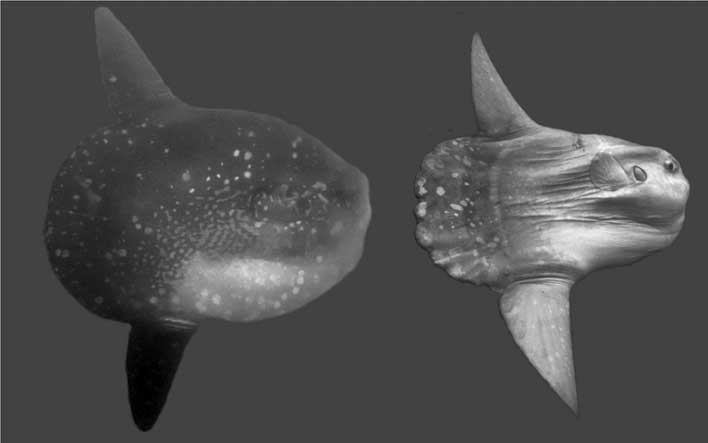
photograph: Alex Hearn
Left : Mola ramsayi
Right : Mola mola
From Small Beginnings
These creatures tend to appear rather comical with a permanent look of surprise when viewed up close. This look is amplified because of the relatively small mouth to body size and former teeth are fused into a parrot-like beak. The body is laterally compressed and circular in shape, resembling a garbage can lid. The reason for this is that the back fin they are born with, becomes stunted and doesn’t develop further. Instead, it folds into itself creating a rudder, referred to as a clavus. Mola tend to be silver in color, with white spots and have a very rough skin texture. Some people describe them as ugly. Personally, I think they are awkwardly cute.
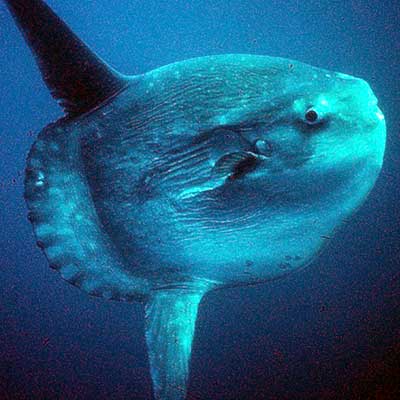
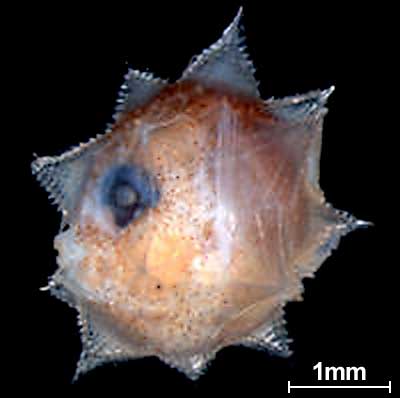
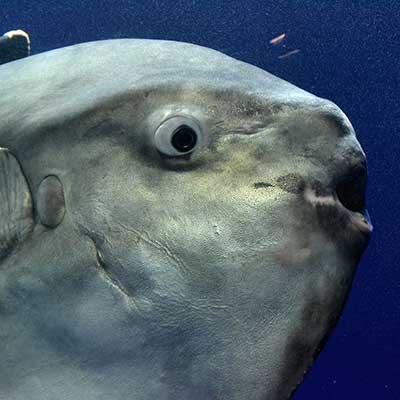
From left to right: Mola Ramsayi in all it’s glory, Mola fry, close up of Mola Mola. Photo credit to fishesofaustralia.net.au
Understanding your diving target
So Special Agent Flipper, now you know what it is you’re looking for and a little about what it is, lets get down to business.
When to dive with Mola
Research suggests that although this bony fish is thought to inhabit the islands all year, most of that time is spent at depths beyond 50m which is outside the limits of recreational scuba diving. As far as we know, Mola seem to prefer a temperature between 10 and 27 degrees and the spring tides between June to September, bring a cold-water upwelling. At this time, the Mola seem to spend some time at the temperature border between the colder deeper water and the warmer surface water. This is known as the “base surface layer”, typically around 17m to 25m.
Once the deeper waters get too cold, they make their slow ascent to the surface to warm themselves in the slightly milder water. This allows reef fish, particularly banner fish, moorish idols and butterfly fish to start a cleaning session on the ecto-parasites which have attached themselves since the last cleaning session.
Where to dive with Mola
The most famous place to dive with Mola is around the dive sites of Nusa Penida, with a majority of divers staying on Nusa Lembongan and accessing the dive sites by boat.
In the past, the most famous dive site to see these beasties was Crystal Bay. However, due to the popularity of this dive site during the Mola season, we at Siren Diving often chose to dive alternative, less crowded sites. Mola have been sited at pretty much all of the dive sites around the islands and an encounter without the crowds is a far more rewarding experience.
A survey conducted in 2015 estimates the population of Mola off Bali’s Southern coast to be over 200 individuals. The fish are under observation and have their sightings recorded by a few different organisations, namely the Marine Megafauna Foundation (MMF) at and The Bali Mola ID Catalogue.
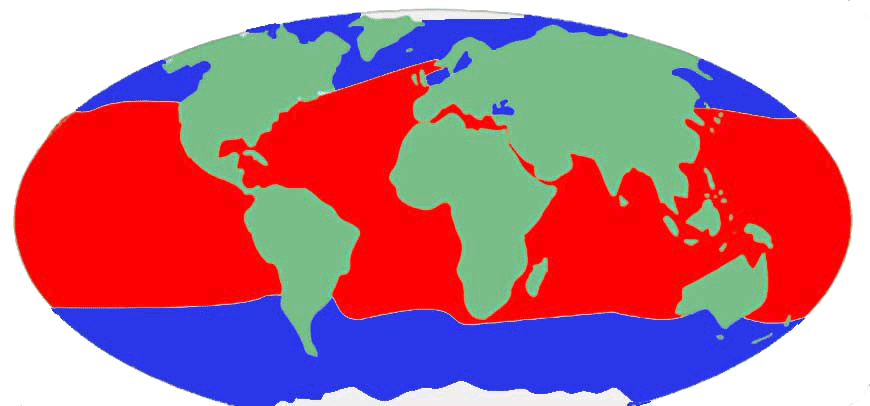
The red band shows general mola distribution
What is it like to dive with a Mola
Once you are in the water, you hang almost motionless, staring out into the deep blue abyss. Hoping that today is the day. Slowly, a dark blur appears in the distance at the edge of your vision, which grows darker as the seconds pass. Like a modern day dinosaur of the deep, the Mola swims lethargically into view. Divers, transfixed and well prepared will stay still to allow this awkwardly majestic creature to come closer and go about its business. The Mola is a shy and easily startled creature and camera flashes, tank bangers and arm flapping do nothing to help these enormous fish settle into their routine.
How to interact with the Mola on a dive
Tourists come to dive in Indonesia, and Bali in particular to hopefully see Mola and manta rays. What should you do if you are lucky enough to see one in the water?
The Lembongan Marine Association in combination with the Nusa Penida Marine Protected Area has come up with a few simple guidelines which not only make the experience more enjoyable, but also teaches us a little about the animal biology and behaviour.
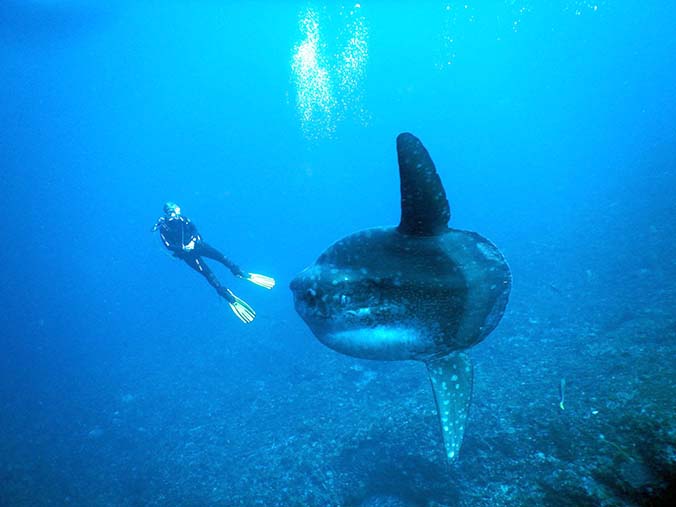
- Never touch a Mola mola or in fact ANY aquatic animal whilst in their environment.
- Approach slowly within their field of view. It’s worth noting that predators normally approach their prey from behind or below so being in the animals vision makes you less threatening.
- Never chase a Mola mola for the same reason as above… even if you really want to get that great photo… chances are, you’ll make a mess of the photo, distress the animal and have a bunch of other divers rather annoyed at you.
- Never enter or swim over a cleaning station as the animals will get spooked and leave the area.
- Maintain a distance of no less than 3m from the closest animal
- Always follow the directions of your guide. They have been trained to give you the best experience they can without causing undue stress to any marine life.
Things to watch out for while diving with Mola
I know you are excited to get to work Special Agent, but please remember to take the following into account while undertaking this mission.
As already mentioned, mola mola and mola ramsayi normally live in deep water and when recreational diving, we only see them when they come into shallow water. This leads to great excitement for all involved, (probably not the Mola itself), but please be aware of your depth and time limits while you are viewing this magnificent beast.
The Mola will be perfectly at home if he or she decides to descend to 50 meters plus, but you will not be. The strong currents in the area are a lifeline, bringing nutrients and food to all the life in the area but an unwary diver can find themselves caught in a rip or down current and unable to make a safe ascent.
Always dive with a reputable Dive Center to ensure that your experience will be as rewarding and safe as possible.
Don’t let us down Special Agent Flipper… Do your best, now go and get wet.
This message may self destruct in 30 seconds…
